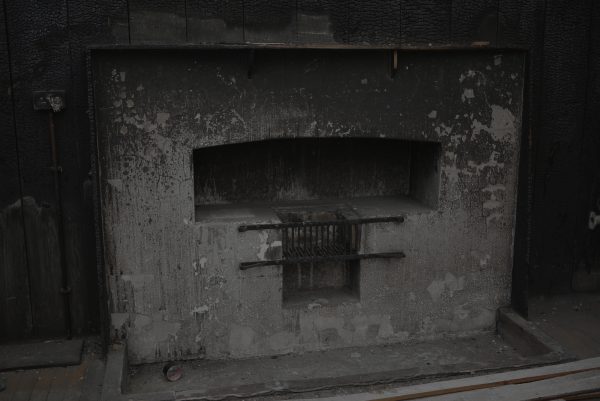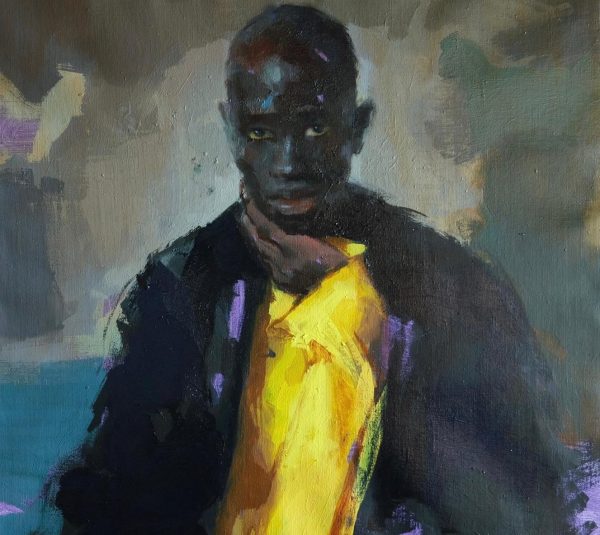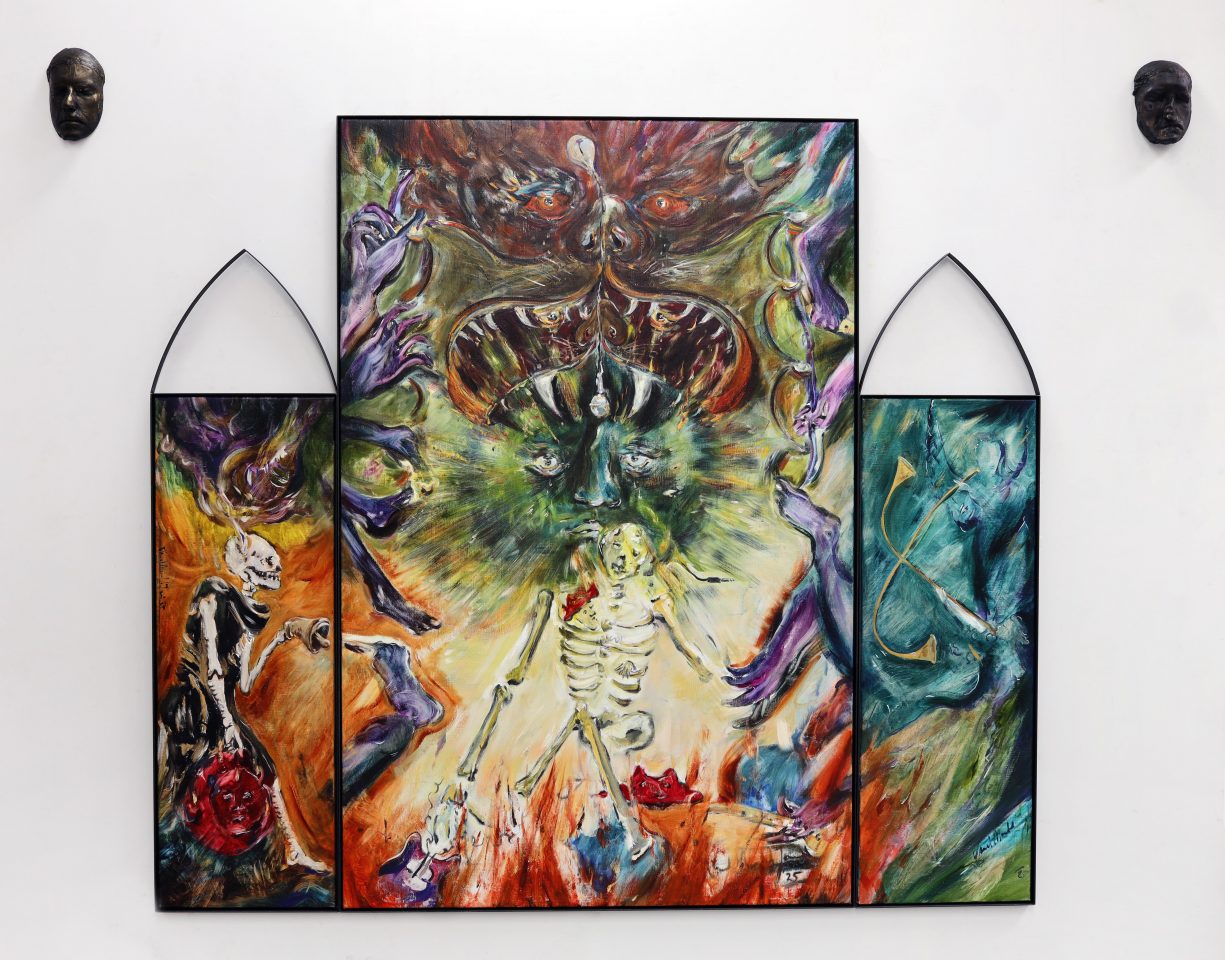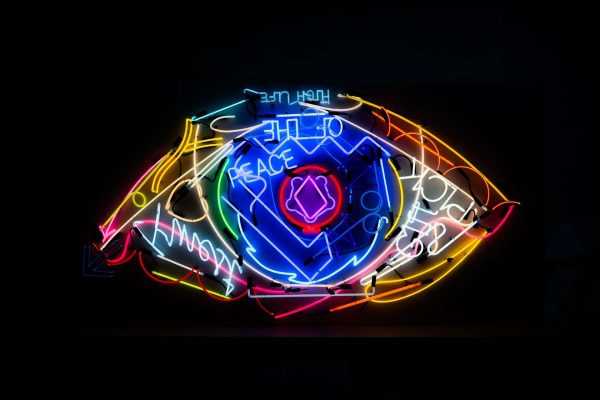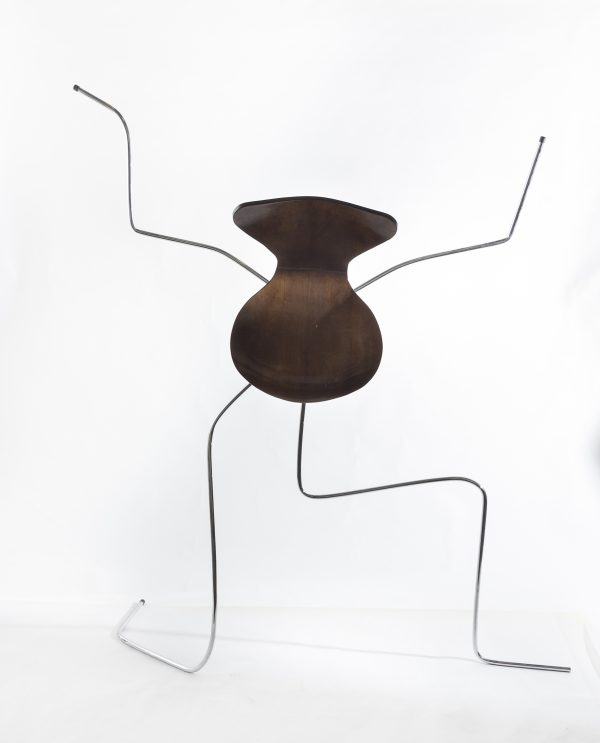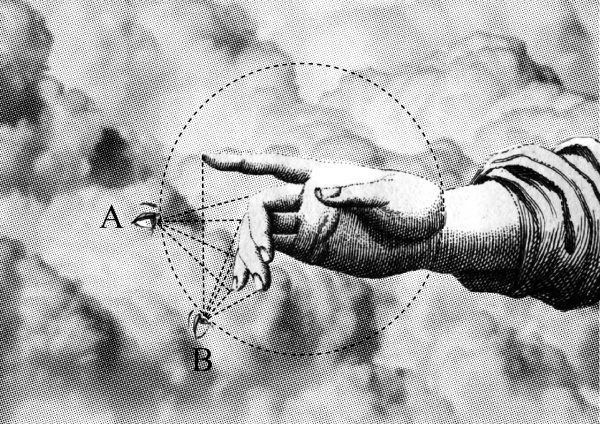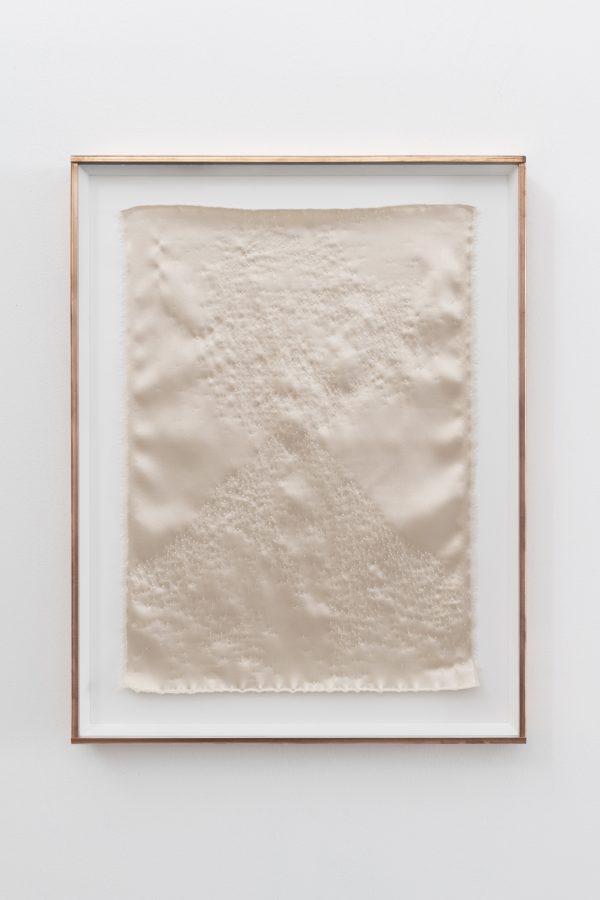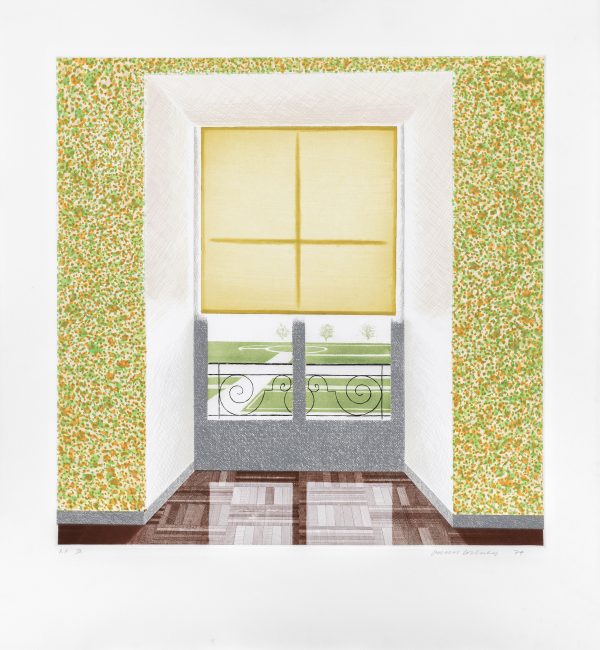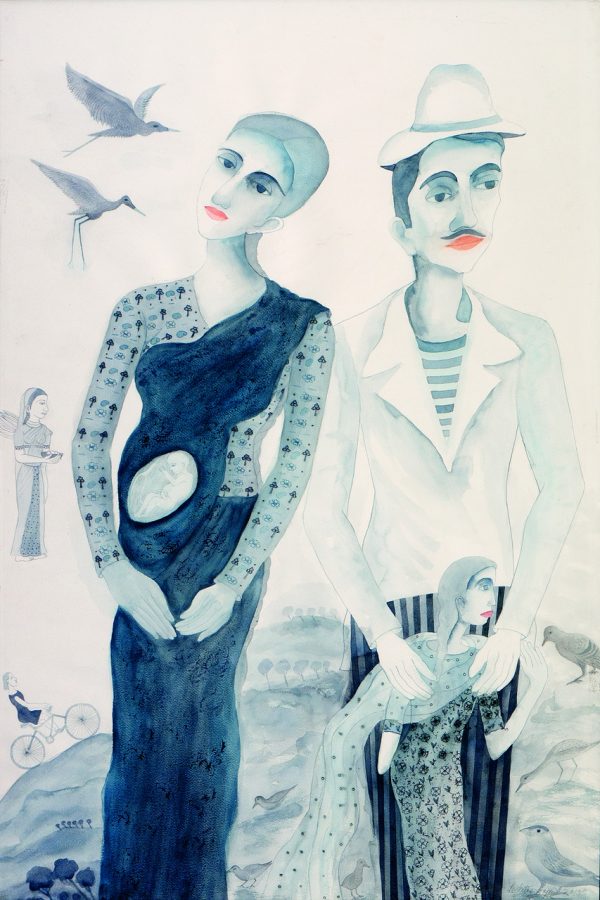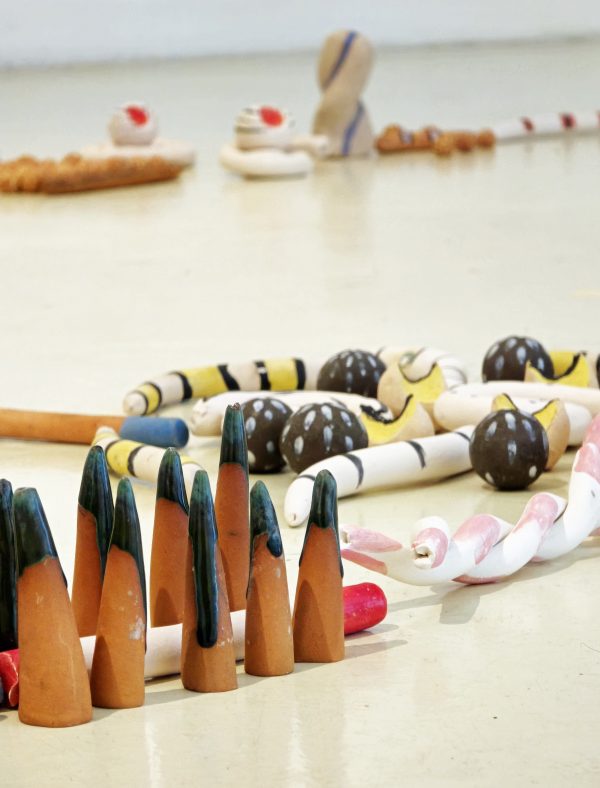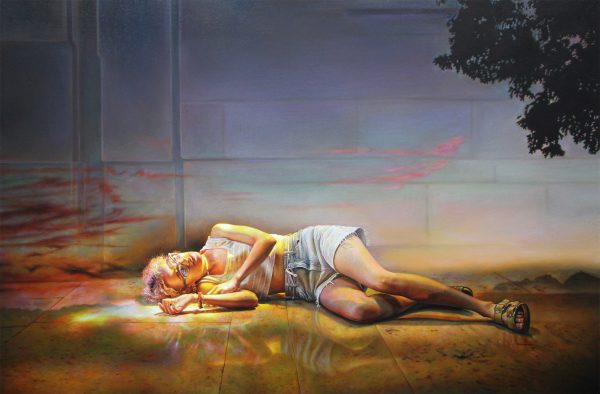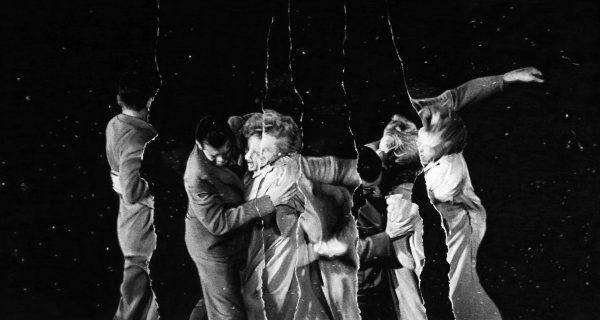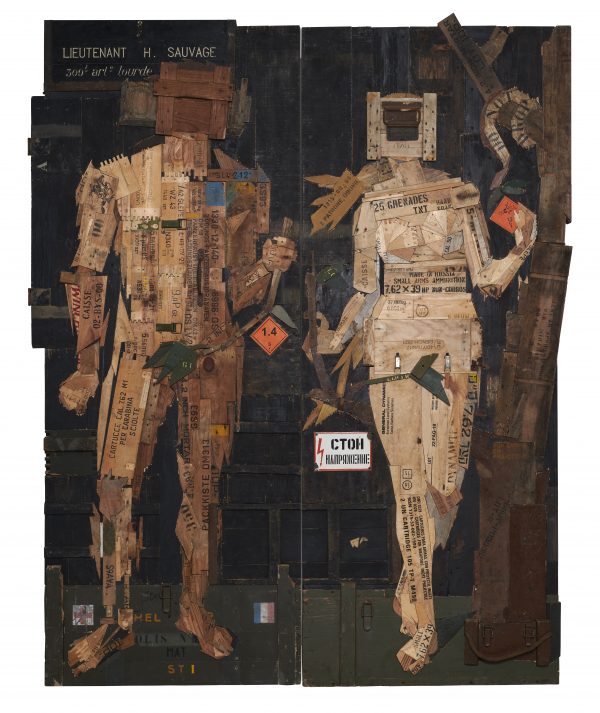Galerie Nathalie Obadia
Joris Van de Moortel , Belgium
"Le poids du ciel illumine la terre"
Joris Van de Moortel music enjoys direct access to the soul, has an immediate echo of response since we have music within ourselves, 2025, Huile sur lin et cadre en acier de l’artiste avec deux sculptures de tête faites en résine acrylique et patine effet bronze (une avec le nez droit et une avec le nez cassé)
Galerie Nathalie Obadia is pleased to present Le poids du ciel illumine la terre, a solo exhibition by the Belgian artist Joris Van de Moortel. Following his major exhibition at the Stedelijk Museum Voor Actuele Kunst (S.M.A.K.) in Ghent which recently closed in March 2025, Van de Moortel unveils new works in a contrasting setting: the space of the Parisian gallery, made of alcoves and arches, that the artist has adorned with stained glass. Transformed by his works, the gallery’s architecture evokes a place of worship: its high ceilings seem to bring heaven and earth together. A profusion of celestial fragments is inflected with profane detail, freely circulating across oil paintings, watercolors, sculptures, mirrors, neon works and a video. Here, light becomes faith: it moves between works, and sometimes flows through them, revealing the singular vision of Joris Van de Moortel—a vision of a world which, although tormented, is adorned with a thousand and one colors.
Born in 1983 in Ghent (Belgium), Joris Van de Moortel lives and works in Antwerp. For over almost twenty years, he has developed an oeuvre of immense vitality that he activates through performances—often involving music—where materials such as wax, fire or glass coalesce. This distinctive approach imbues the artist with a marked spirituality, recalling a modern-day alchemist on a quest for new explorations. For where some may feel the weight of heaven as a suffocating lid, Joris Van de Moortel affirms its dazzling creative energy. His self-portraits, licked by flames, seem to erupt, his skull violently exploded. This tumult of thought, multiplying around his body, is presented next to Hoofd met mond als poort (Head with mouth as a door), a work which deepens his reflection on the porosity of mind and body. In Joris Van de Moortel’s universe, crossing the threshold that separates flesh from the epidermis seems possible at last.
This theme is recurrent in the artist’s work, notably through the myth of Marsyas and its motif of flayed skin. Dismembering is a brutal way of exposing the insides of a being: whether this be as punishment, or for clinical purposes, reveling that flesh belongs to the regime of secrets. This exploration becomes a means for the artist to probe the visceral depths of the human condition from a contemporary perspective.
A subtle interlacing of historical references with the artist’s personal life lies at the very heart of his work. It isn’t uncommon to notice guitars, wax hat heads—that he sometimes activates during his performances—or even the artist’s own face in his paintings. We can find these elements in Ur•pheus Stringe (after Titian), in Satan in All His Glory (after W. Blake) or even in the work The Lyre of Ur•pheus (wood, String, Glue) (after Hans Leu). There is also L’Apparition (after Gustave Moreau) where the floating heads of John the Baptist could represent the artist himself. Like in his works around the myth of Marsyas, in this new body of work Joris Van de Moortel’s incarnates a satyr, a god, a martyr and a conqueror, showing us that these antagonisms function like the opposing poles of a magnetic field. The nature of Being is, in essence, good and evil at the same time.
Joris Van de Moortel reinterprets works from the Renaissance and Romanticism, transposing them into a contemporary context. The exhibition is enriched with references ranging from The Apocalypse by Dürer to the poems of William Blake, reminding us that art and letters have always been intimately enmeshed. This is something that André Breton himself has expressed, evoking how his discovery of the Gustave Moreau museum when he was sixteen years-old had shaped his way of loving. This lineage lives on through Joris Van de Moortel: every time he comes to Paris, he never misses a chance to visit this same museum, its symbolist and mystic universe continuing to nurture his imagination. His inspiration also comes from some of the greatest writers of the nineteenth century, such as Charles Baudelaire—whose work the exhibition’s title directly refers to—or William Blake, whose singular genius, in his own time, was judged as madness. The English poet was bent on redefining the frontiers of good and evil: in Marriage of Heaven and Hell (1790) he associates vital energy and desire with Hell and Reason with Heaven. He rejects the traditional dualism between body and soul, instead celebrating the union of opposites as a key to a better understanding humanity. In this same spirit, Joris Van de Moortel fuses heaven and hell in a permanent and unresolvable dia-logue—projecting thus La Gueule de l’Enfer (Hell Mouth) on a radiant sun, announcing the arrival of the divinities. As for the skeletons, they unite with the delicateness of poppy flowers for a danse macabre both tragic and sublime.
Le poids du ciel illumine la terre is a journey through time and spirit. It invites us to rethink the weight of our soul which, coming from the heavens, could illuminate the earth from within. While evoking the cyclical process of care between heaven and earth, linked to the three dimensions of Being—past, present, future—the exhibited works promise a better future, where humanity would recover the profound meaning of its existence.
In Joris Van de Moortel’s exhibition, viewers are thus invited on an odyssey to the very heart of the tumultuous world: they embark on a bronze ship, that, as it slowly sinks into the abysses of the earth, directs its prow towards the sky—incarnating both the fall and the force of a possible ascension.
Solo show of Joris Van de Moortel
From May 17th to the end of July, 2025
The gallery
Since the opening of the first gallery in Paris in 1993, followed by the one in Brussels in 2008 and a second space in Paris in 2013, Nathalie Obadia has exhibited emerging and recognized artists of the international contemporary art scene. In the fall of 2021, Galerie Nathalie Obadia has opened a new space in the Matignon Saint-Honoré district in Paris.
For many years, the gallery has also participated in the rediscovery of deceased artists like Martin Barré, Josep Grau-Garriga, and Seydou Keita. The mission of the gallery is also to promote artists to institutions in France and abroad.
Galerie Nathalie Obadia participates in international art fairs : Art Basel, Art Basel Hong Kong, Art Basel Miami Beach, Paris+ by Art Basel, Paris Photo, Art Genève, Art Dubai, Art Brussels, Art Luxembourg, Art Paris, 1-54 Marrakech, TEFAF Maastricht, TEFAF New York among others.
Gallery artists
Brook Andrew, Edgar Arceneaux, Martin Barré, Nú Barreto, Valérie Belin, Carole Benzaken, Guillaume Bresson, Rosson Crow, Luc Delahaye, Patrick Faigenbaum, Roland Flexner, Roger-Edgar Gillet, Quentin Gouevic, Josep Grau-Garriga, Laura Henno, Fabrice Hyber, Shirley Jaffe Estate, Hoda Kashiha, Seydou Keïta, Sophie Kuijken, Robert Kushner, Guillaume Leblon, Eugène Leroy, Romana Londi, Lu Chao, Rodrigo Matheus, Meuser, Johanna Mirabel, Youssef Nabil, Youssef Nabil, Frank Nitsche, Manuel Ocampo, Shahpour Pouyan, Laure Prouvost, Jorge Queiroz, Fiona Rae, David Reed, Antoine Renard, Jason Saager, Sarkis, Andres Serrano, Jessica Stockholder, Mickalene Thomas, Nicola Tyson, Joris Van De Moortel, Agnès Varda, Viswanadhan, Wang Keping, Brenna Youngblood, Ni Youyu, Jérôme Zonder
